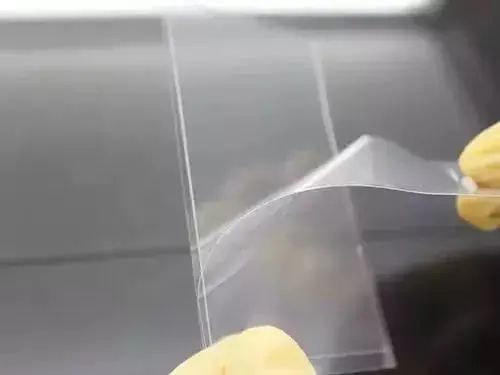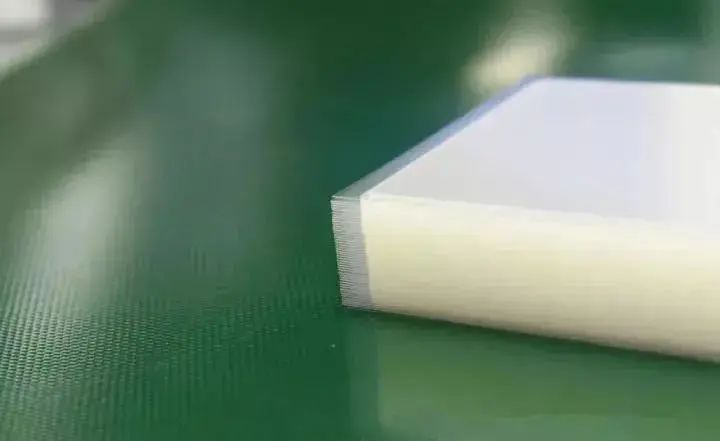

Hotline:0755-22277778
Tel:0755-22277778
Mobile:13826586185(Mr.Duan)
Fax:0755-22277776
E-mail:duanlian@xianjinyuan.cn
OCA (Optical Clear Adhhesive) is a special adhesive used to bond transparent optical components such as lenses. It is required to have colorless and transparent properties, a light transmittance of over 90%, good bonding strength, the ability to cure at room temperature or medium temperature, and the characteristic of small curing shrinkage. It is a special double-sided adhesive with optical transparency.
OCA optical adhesive is one of the important raw materials for touch screens. It is a double-sided adhesive tape without substrate material, which is made of optical acrylic adhesive and then laminated with a release film on the upper and lower layers. It is the best adhesive for touch screens.
1. Reduce glare, minimize the loss of light emitted by LCD, increase the brightness of LCD and provide high transmittance, and reduce energy consumption;
2. Increase contrast, especially under strong light exposure;
3. Surface connections have higher strength;
4. Avoid watermarks (scientific name: Newton's ring);
5. The surface of the product is smoother;
6. Boundless, expand the visible area.

Cleanroom black handkerchief workbench, desk lamp, comparison card, gloves, finger cots, dust-free cloth, art knife
environmental condition
Illumination: 2000/-500 Lux
Temperature: 20/-5 ℃
Humidity: 55/-15% RH
Inspection visual range: 30 ± 5cm
1. Gently take out a finished product from the inspection box and place it under a desk lamp for inspection
2. Take the PET edge to the finished product (non adhesive area) and inspect the appearance by reflecting the light film surface at a 30-60 degree angle to the eyes on the front; Check the appearance of the edge clockwise, starting from the left circle, and the appearance of the membrane surface from top to bottom
3. If there are items that can be wiped on the appearance: such as foreign objects, residual glue, dirt, fingerprints, etc; Use dust-free cloth and environmentally friendly degreasing oil to gently wipe and remove stains
4. The product is erected vertically, and the PET edge is pinched under the desk lamp for transparency inspection. Clockwise, check the edge of the light and heavy film gap from left to right, and inspect the appearance inside the mold from top to bottom for transparency inspection
5. Use a craft knife to gently remove burrs or foreign objects in the edges or gaps, and transfer the removed objects onto the dust adhesive tape on the countertop
6. Put the inspected OK products into the OK box transfer box, and place the defective products into each defective product box
7. After the turnover box is filled with products, align them according to the requirements, and the product opening should be raised upwards. The light film should be loaded into the prepared finished box twice with the opening facing upwards
8. Confirm that after packaging as required, there are no abnormal arching or other phenomena
Note: As bubbles are an abnormal phenomenon that can be eliminated, defective products with bubbles can be placed (with the batch number of each base material indicated during placement for the shipment record of good products after re inspection), and re inspected again after the entire batch inspection is completed (if there are any defects during re inspection, they will be considered defective products).
1. Leakage (a problem that occurs when the product is shipped to the customer for bonding)
terms of settlement:
① The customer's own design size is the lower limit plus the production size is below the lower limit, resulting in a smaller mold size design. It is necessary to communicate with the customer in advance to understand the actual size of the customer's product.
② There is a deviation in the measurement dimensions between the company and the customer. You can take 10 products to the customer's side to measure the dimensions, and then take them back to the company for measurement. Compare the differences in dimensions between the two sides to create a unified size standard.
③ Control the processing environment, storage environment, and transportation environment temperature, and can control issues such as shrinkage.
2. Problems such as creases, indentations, glue folds, scratches, etc
terms of settlement:
① The small core of the coil caused wrinkles and other defects near the core components, so a 6-inch large core was used instead.
② If the raw material is placed on a pallet, its own weight will cause indentation on the material. Use a fixture to suspend the material in the air.
③ The knife mold is not sharp enough or the foam is not suitable, resulting in indentation. The knife adopts a high-quality mirror knife (imported from Japan) wooden knife mold. The wooden board requires a thickness of 21-22mm, which is 2mm thicker than the usual thickness. The foam adopts low-density and high elasticity pad knife foam. Generally, a density of 45 ° and an elasticity of 70% are used.
④ When cutting raw materials, there may be scratches and indentations on the surface of the material. When cutting raw materials, a light release film should be added for effective protection to avoid surface scratches. In addition, when cutting, pay attention to the material tension and try to minimize the phenomenon of glue wrinkling.
⑤ Reduce the pressure generated during die-cutting, avoid direct contact between die-cutting material and metal or other fixed non rotating objects, and add protective devices.

3. Overflow glue
terms of settlement:
① The knife mold is not sharp enough or the foam is not suitable, resulting in indentation. The knife adopts a high-quality mirror knife (imported from Japan) wooden knife mold. The wooden board requires a thickness of 21-22mm, which is 2mm thicker than the usual thickness. The foam adopts low-density and high elasticity pad knife foam. Generally, a density of 45 ° and an elasticity of 70% are used.
② Adhesive mold, apply release agent to the inside of the knife and foam side to prevent mold sticking.
③ Waste disposal causes glue overflow. Change the waste disposal angle, accelerate die-cutting speed, and reduce downtime.
④ Handmade packaging causes poor squeezing, and it is important to enhance proficiency in techniques and correct errors.
4. White spots and foreign objects
terms of settlement:
① During die-cutting, the material generates static electricity during operation, which can adsorb dust and foreign objects in the air. An ion fan is added at the exposed position of the adhesive, and there is a filter behind the ion fan; Additionally, dust-free barriers should be added to the exposed areas of the adhesive for isolation and protection.
② Reduce the frequency of workers walking in front of the machine due to environmental factors; Add or replace FFU (high-efficiency filter) in the clean room.
5. Pinholes and indentations
terms of settlement:
① Dust and foreign objects are caused during processing, and an ion fan is added at the exposed position of the adhesive. There is a filter behind the ion fan; At the same time, add dust-free barriers to isolate and protect the exposed areas of the adhesive.
② Dust and foreign objects are adsorbed on the adhesive wheel, causing dents in the light release film when it is attached to the replacement film, and affecting the product colloid. Therefore, an ion fan should be added; Increase the cleaning frequency of the adhesive roller.
③ When taking the product, excessive force may cause product indentation. When packaging, pay attention to the force of taking the product and handle it with care.
6. Bubble
terms of settlement:
① Peeling off the bottom layer of the support during packaging can cause bubbles, thus enhancing the accuracy and proficiency of the technique for peeling off the bottom layer.
② The raw material has bubbles and is defective. Feedback to the supplier and request improvement.
③ Die cutting generates bubbles, and the pad knife foam uses low-density, high elasticity pad knife foam, generally with a density of 45 degrees and an elasticity of 70%.

Advanced Institute (Shenzhen) Technology Co., Ltd, © two thousand and twenty-onewww.avanzado.cn. All rights reservedGuangdong ICP No. 2021051947-1 © two thousand and twenty-onewww.xianjinyuan.cn. All rights reservedGuangdong ICP No. 2021051947-2